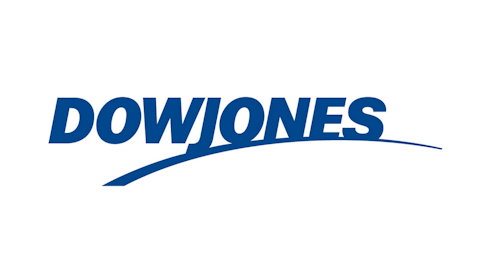Bank of America Corp. (NYSE:BAC) is an investor darling, at the very least around The Motley Fool. With it being so popular, since I’m officially bearish on it, I try and come back to it occasionally and approach it with a non-judgmental eye.

This is another of those attempts — one that still leaves me ultimately wary of buying shares.
1. Strong share-price performance over the past year
Most bank investors know that Bank of America Corp. returned better than 100% to shareholders for 2012, but the bank has also performed well over the past year, returning 26.49% to its loyal fans. Bear that I am, I can’t seriously argue with either number.
2. Relatively mediocre year-to-date share-price performance
From January 1 of this year, the bank has returned 4.41% to investors already. Solid, though fellow leviathan Citigroup Inc. (NYSE:C) has returned 9.65% year to date, and JPMorgan Chase & Co. (NYSE:JPM) 9.23%. Keep swinging on this metric, Bank of America Corp. (NYSE:BAC).
3. Off-putting valuation
Bank of America Corp.’s price-to-book ratio remains at an off-putting 0.62. It’s off-putting to me, anyway. Rather than telling me the bank is undervalued and a bargain, like it does for many investors, that number is telling me there’s something fundamentally wrong somewhere in the works.
This is a judgment call, of course, and feel free to call me out for being a Citi investor, which has a P/B of 0.73, which isn’t a whole lot higher than Bank of America Corp.’s 0.62.
4. Solid stress-test results
For 2013, Bank of America Corp. (NYSE:BAC) went into the Comprehensive Capital Analysis and Review with an actual Tier 1 common ratio of 11.4% and came out with a stressed minimum of 6.8%. Not bad for a bank that scored 8.7% and 5.7% respectively on the 2012 CCAR.
Even the indefatigable Wells Fargo & Co. (NYSE:WFC) only managed a 2013 9.9% Tier 1 common ratio and 7.0% stressed minimum, so Bank of America Corp. is in good company, here. Bank of America Corp. also came out of the 2013 CCAR with a 6.0% stressed minimum with all proposed capital actions, which means the bank will be able to reward shareholders with $5 billion in share buybacks through the first quarter of 2014.
5. Terrible fourth-quarter earnings
For the fourth quarter of 2012, Bank of America Corp. (NYSE:BAC)’s revenue shrank by a whopping 20.7%, and its net income shrank by an even more whopping 63.2%. None of its other big-four peers even came close to this staggeringly awful performance.
Even Citi, which came out of the financial crisis in only mildly better shape than Bank of America Corp., grew its fourth-quarter revenue by 5% and its net income by 25.1%. Bank of America Corp. dug itself into the mother of all holes in the housing boom, and it’s still not clear when — or how exactly — it’s going to get itself out.
6. Horrid return on equity
Return on equity measures the amount of net income a company makes with shareholder money and is a popular metric for measuring banks.
ROEs occasionally made it up into 20% and beyond territory in the run-up to the financial crisis, and while no bank investor can honestly expect performance like that anymore, they can certainly expect better than 1.79%, which is Bank of America Corp.’s ROE.
JPMorgan Chase & Co. (NYSE:JPM)’s ROE is a respectable 10.98%. Wells’ ROE is an even more respectable 12.89%. Even Citi can manage a 4.27% ROE.
7. Bank of America Corp. (NYSE:BAC) is still too big to fail
As far as pluses and minuses go, I offer up this up in the Bank of America Corp. plus column. Like for its big-banking brethren, being too big to fail (TBTF) means never having to say you’re insolvent. For Bank of America Corp. (NYSE:BAC) stockholders, this means that the government — a.k.a., the American taxpayer — implicitly guarantees its investments.
How great is it to know that you never risk completely losing the money you’ve invested? To be fair, of course, this applies to other TBTF institutions as well, such as JPMorgan, Citi, Wells, and pretty much all of the 18 banks the Fed ran through its 2013 stress tests.
Foolish bottom line
Bank of America Corp. has come a long way since the financial crisis, but still has a ways to go.
I realize this isn’t groundbreaking analysis, and that many people who are invested in the superbank would agree with me, at least to some extent. Where we would disagree sharply, however, is in the estimation of the distance the bank still has to go to return to some steady, reliable degree of normalcy.
The article 7 Things You Need to Know About Bank of America originally appeared on Fool.com.
Fool contributor John Grgurich owns shares of Citigroup and JPMorgan Chase. Follow John’s dispatches from the bleeding heart of capitalism on Twitter @TMFGrgurich. The Motley Fool owns shares of Bank of America, Citigroup, JPMorgan Chase, and Wells Fargo.
Copyright © 1995 – 2013 The Motley Fool, LLC. All rights reserved. The Motley Fool has a disclosure policy.
